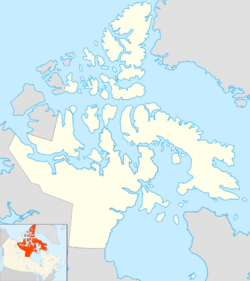Bear Islands facts for kids
| Geography | |
|---|---|
| Location | Northern Canada |
| Coordinates | 54°22′N 081°05′W / 54.367°N 81.083°W |
| Administration | |
|
Canada
|
|
| Nunavut | Nunavut |
| Region | Qikiqtaaluk |
| Demographics | |
| Population | Uninhabited |
The Bear Islands are a group of islands located in James Bay, a large body of water in Canada. They are found southeast of the Belcher Islands. These islands are part of Nunavut, a Canadian territory. The islands are made of dark, rocky land called basalt outcrops. The group includes Bear Island and Two Cubs Islands. Another nearby island is Sunday Island. The Bear Islands are not currently home to any people.
Contents
What Are the Bear Islands?
The Bear Islands are found in the southern part of James Bay. This bay is connected to Hudson Bay. The islands are known for their black basalt outcrops. These are dark, volcanic rocks that stick out of the ground. The islands are part of the Qikiqtaaluk Region in Nunavut. This is a large territory in northern Canada.
Main Islands in the Group
The Bear Islands group includes two main parts. One is called Bear Island. The other is known as Two Cubs Islands. They are quite close to each other.
History of Bear Island
Bear Island played an important role in Canada's history. From 1957 to 1965, it was a special site.
The Mid-Canada Line
During those years, Bear Island was a radar site. A radar site uses special equipment to detect objects. This site was part of the Mid-Canada Line. The Mid-Canada Line was a chain of radar stations. It was built across Canada during the Cold War. Its purpose was to watch for airplanes. It helped protect North America.
Facilities on the Island
The radar site on Bear Island also had other buildings. There was a place to store fuel, called a petroleum depot. It also had a small airfield. An airfield is a place where small planes can land and take off.
After Abandonment
After 1965, the radar site was no longer needed. So, it was left empty. The buildings and equipment became old and broken. This is called being derelict.
Cleaning Up the Island
In 1996, people decided to clean up Bear Island. This process is called remediation. It means making a place safe and clean again. The work to clean up the island started later. It was finished during the summer of 2010. The cleanup cost about $5.5 million. This helped to restore the island.



